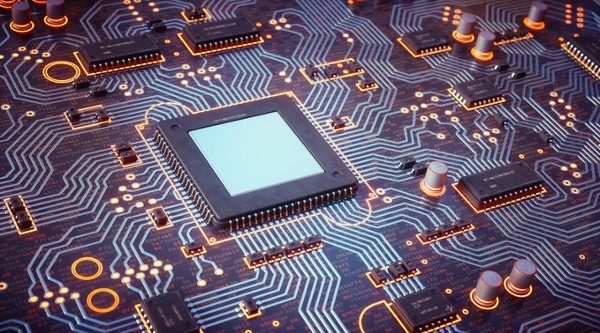Financial PCBs 101: Server PCBs in the Infrastructure
PCBs are crucial to modern financial systems and play a critical role in the infrastructure that supports the global financial ecosystem. These...
 Driven largely by technological advancements and the increasing demand for efficient trading solutions, the financial technology landscape is evolving at an unprecedented rate.
Driven largely by technological advancements and the increasing demand for efficient trading solutions, the financial technology landscape is evolving at an unprecedented rate.
At the heart of these innovations lies the printed circuit board (PCB), a crucial component that underpins the functionality of trading platforms worldwide. While often overshadowed by the flashy software and sophisticated algorithms that dominate discussions, PCBs are the silent engines powering every transaction, every data point, and every strategic move on a trading platform.
Far from being mere components, PCBs orchestrate the complex symphony of high-speed data processing, ultra-low latency communication, and robust reliability on trading platforms that today’s financial markets demand.
Let’s explore the critical role of PCBs in the trading world and how PCB design and performance directly impact the success of financial institutions.
At their core, PCBs are the backbone of electronic devices, serving as the foundation upon which all other electronic components are built and connected. In web trading platforms, PCBs ensure the hardware can support the demanding computational processes required for real-time data processing, order execution, and complex algorithmic trading strategies.
Financial trading platforms demand high-speed processing, low latency, and precise data handling to function effectively. These requirements place significant demands on electronic hardware, particularly the PCBs. Here’s how PCBs contribute to the performance and reliability of trading platforms:
The components mounted on PCBs are as critical as the boards themselves. Several key parts are essential for trading platforms:
|
The brain of any trading platform, microprocessors, and Central Processing Units (CPUs) perform the complex calculations necessary for executing trades, analyzing market data, and running algorithms. The PCB must support high-performance processors capable of handling these tasks efficiently. |
|
Memory modules store and access data quickly. Random Access Memory (RAM) is vital in trading platforms, as it allows for the rapid retrieval of data needed for real-time decision-making. |
|
FPGAs offer customizable hardware acceleration, enabling trading platforms to execute complex algorithms at speeds that standard processors cannot match. The flexibility of FPGAs allows for continuous optimization of trading strategies. |
|
Trading platforms require fast and reliable network connections to communicate with exchanges, data providers, and other trading systems. NICs on PCBs ensure stable connections that handle high data throughput with minimal latency. |
|
Efficient power management is vital for the consistent operation of trading platforms. PCBs must include components that regulate and distribute power effectively, preventing overheating and ensuring that all system parts receive the power they need to function optimally. |
PCB design has evolved significantly over the years, driven by the increasing demands of modern financial markets. Initially, trading platforms were relatively simple, with basic PCBs supporting straightforward operations. However, the need for more sophisticated PCBs emerged as trading technologies became more complex and transaction volumes increased.
Today’s trading platforms rely on multilayer PCBs, which can support a greater density of components and more complex circuitry. These multilayer boards integrate advanced components like FPGAs and high-speed processors, enabling trading platforms to perform at the levels modern markets require.
The trend towards miniaturization has also impacted PCB design. As trading platforms become more compact and mobile, PCBs must be designed to fit within smaller form factors while still delivering high performance. This has led PCB manufacturers to innovate with materials, component placement, and cooling solutions to ensure that smaller boards can handle the same workload as their larger counterparts.
PCB design for trading platforms can be challenging. These platforms require highly reliable and efficient hardware to ensure seamless operations, which adds complexity to the PCB design process.
The primary hurdles in PCB manufacturing include:
Resource: Learn Why Testing, Prototyping, & Inspection Are Crucial to PCB DesignWhen millions of dollars or the safety of your end customers are on the line, meticulous PCB testing and prototyping are essential. OEMs and contract manufacturers must collaborate closely throughout the testing and prototyping stages to ensure a seamless process. Download the PCB Testing Ultimate Guide to learn more: |
As artificial intelligence (AI) and machine learning (ML) continue to play an increasingly prominent role in trading, the design of PCBs will need to adapt. AI and ML algorithms require significant computational power, and PCB suppliers must design for the specialized processors and memory modules that these technologies demand.
AI-driven optimization of trading strategies will likely lead to even more customization in PCB design. Trading platforms may require boards that are specifically tailored to the needs of AI and ML algorithms, with features like onboard AI accelerators or dedicated ML processing units.
The rise of quantum computing also presents a potential future direction for PCB design in trading technology. While still in its early stages, quantum computing promises to revolutionize data processing and algorithm execution, requiring printed circuit board manufacturers to develop entirely new architectures to support quantum processors.
The role of PCBs in financial trading platforms is both fundamental and complex. From ensuring high-speed data processing and low latency to supporting the latest in AI and machine learning, PCBs make modern trading possible. As financial markets continue to evolve, so will the design and functionality of PCBs, driving further innovations in trading technology.
If you're looking to enhance your trading platform's performance through expert PCB design and development, Matric can help. We’re a PCB supplier specializing in low-to-high volume, complex assemblies that other contract manufacturers can't handle. Our team of experienced engineers is well-versed in creating custom PCBs tailored to meet the unique demands of your trading systems.
Contact us today to discuss your requirements and discover how we can help you stay ahead in the competitive financial market.

PCBs are crucial to modern financial systems and play a critical role in the infrastructure that supports the global financial ecosystem. These...

In the digital age, where transactions are often completed with a mere tap or click, the seamless operation of financial systems has become a...